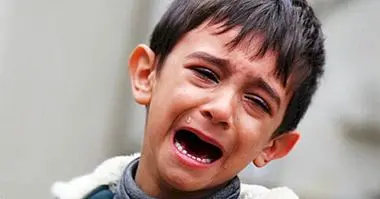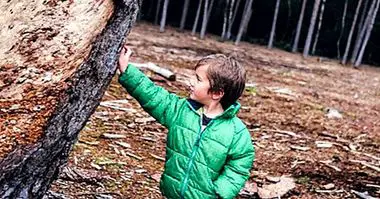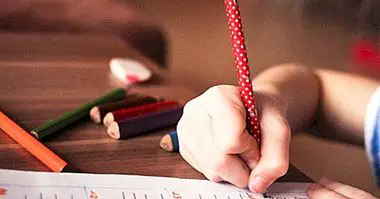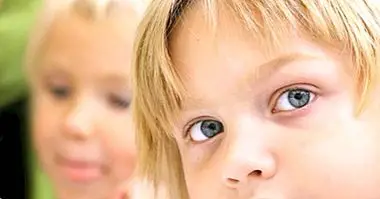Domestic violence and its effects on children
In the previous article, we analyzed bullying from the mimetic theory. We managed to identify the bullying as part of a circle of violence that arises from mimetic phenomenon in which we are immersed, which gives explanation to endless human behavior. Now, based on the mimetic theory of René Girard, human desires are conceived as impulses or motivations whose root does not arise internally, but are essentially derived, that is, that their nature is external to the desiring subject.
Violence in the family: causes and effects
To illustrate the above, we can mention briefly the conflict situations of mythical stories, such as the founding of Rome (the struggle between Romulus and Remus) or that of the Genesis (the deadly rivalry between Cain and Abel), where we can find that competitiveness not so much by getting what the other has, but by becoming the other, by usurping their identity, in which we see autonomy and domination that one lacks (Let's call it the 'desire to be other').
It is in this process of appropriation that comes into play this desire to subdue, to dominate or even to destroy , actions that are reproduced in all social areas.
The drive of domination: a psychoanalytic approach to the phenomenon of violence
Following this line of thought we can notice that if education is the reflection of society and vice versa, the problem of school violence is a cancer that afflicts not only educational actors, but the entire society. Having already analyzed the negative behaviors that characterize bullying, let's take a step back to have a panoramic vision that allows us to study another of the components that make up this conflict. Looking beyond the school, we find the family, the fundamental nucleus of society . It is the elementary support, the basis of the social structure, which refers to the systematic conformation of correlation between individuals directly and indirectly linked within a society.
Attending to this last, in Mexico there is a popular saying: l to education is breast with milk , meaning that the development of the intellectual and moral capacities of people begins at home, although this is true for good or for bad, it is also a condemnation. But what is it that our children are nursing at home?
Most research studies the effects on children of the intrafamily violence , but not in all its aspects and dimensions, since they focus mainly on the aggressions that are directly directed towards minors following the line of relationship father / mother-son / daughter. However, analyzing the relationship between the different forms of aggression, abuse or neglect in families could reveal relevant data for the study of intrafamily violence and its consequences, so according to a research carried out by the Department of Psychology of the University of Arizona, supported by the National Center of Child Abuse and Neglect, children witnessing conjugal / family violence (whether seen or heard), suffer as much as those who are direct victims of violence , from the consideration that the consequences that derive from it are the same.
The child who lives in a violent family environment
According to the American Academy of Child and Adolescent Psychiatry, violence among children and adolescents tends to develop mainly in an environment where the child is in particularly stressful conditions and situations, especially those related to the family, among some examples we can mention the single parenthood, the breakdown or instability of a marriage, the unemployment situation of the parents -which in turn causes a low level of family income-, as well as different aspects of parenthood that can contribute to violent behavior among the parents. children.
Being a father / mother is a complex task, nobody is born knowing to be a father and this can manifest itself through inappropriate control (lack of vigilance, authority and responsibility of children), very strict discipline (laxity and disciplinary incoherence), dissension between parents, rejection of the child and limited participation and / or lack of interest in the child's activities, lack of communication and inconsistency in the parents' role models.
The psychological effects of intrafamily violence in children
Then, violence being an accumulation of uncertainty and frustrations of which the child is unable to locate among their capacities (social behavior patterns) the socially appropriate and necessary means to cope, will seek to reduce stress through crisis behavior, demonstrating different mental and emotional imbalances in their behavior such as distraction, low self-esteem, sleep disorders, sense of guilt and aggression against their peers, family members and property of others.
Today, children are exposed to endemic violence from a younger age compared to a few decades ago. According to WHO global statistics, only in 2011 were there any 250,000 homicides among young people in a range of 10 and 29 years of age .
With respect to sexual violence, an international study reports that between 3 and 24% of women experienced their first sexual experience due to obligation. Finally, a study conducted in 40 countries shows that exposure to violence and harassment affects both boys (8.6-45.2%) and girls (4.8-45.8%), without mention that 15% of children between 1st and 8th grade, revealed that they had been intimidated or harassed "more than one or two occasions" during the six weeks prior to the poll.
While it is true that recommendations are already being made by different agencies and programs at the international level and within each nation, It is necessary to emphasize the importance of eradicating violence from home .



















